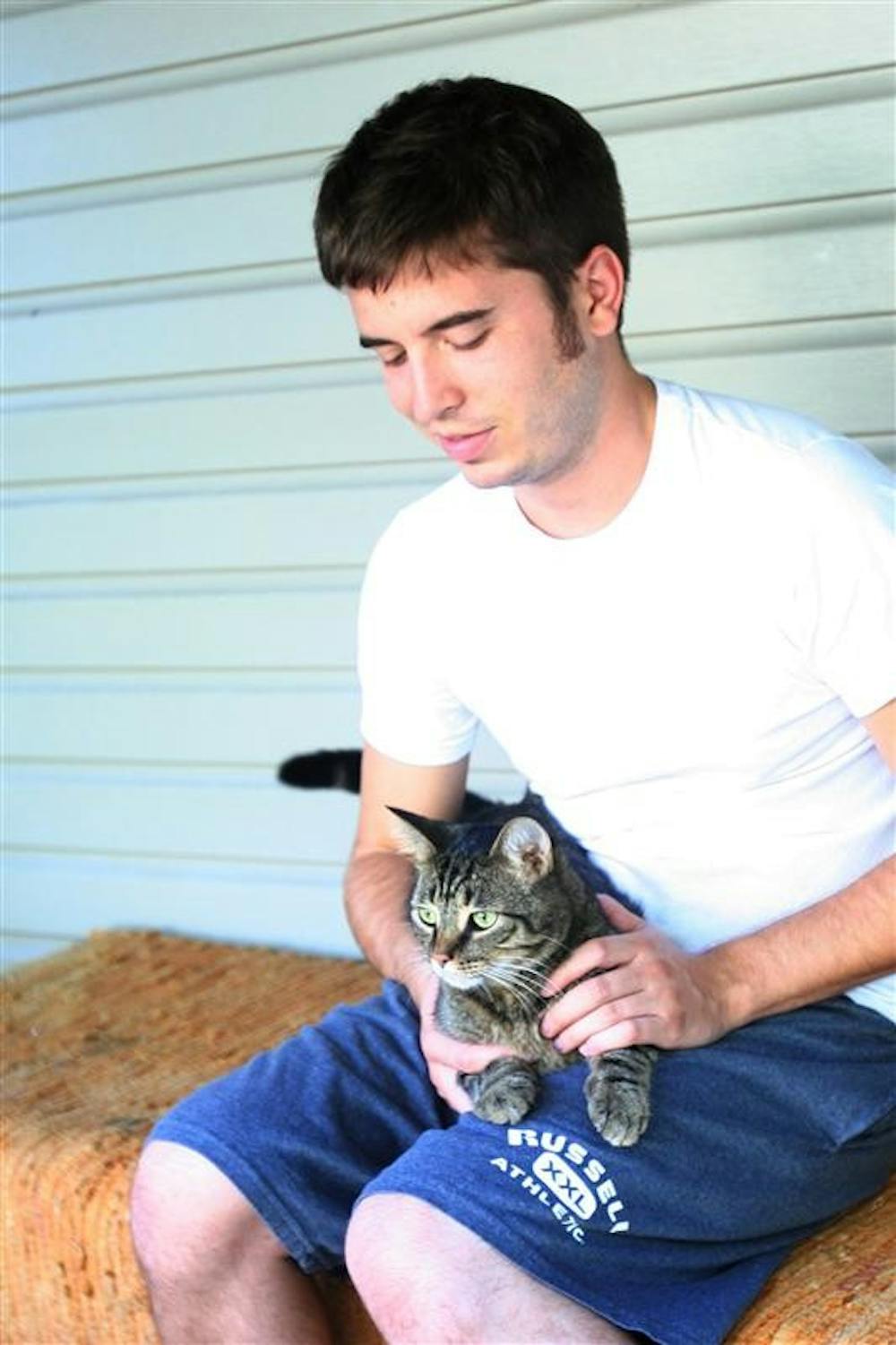Kara Kendall remembers the tearful goodbyes. She remembers watching a student say goodbye to his dog, a lab mix, when his landlord said he couldn’t keep his furry friend anymore. It was a sad day for the student, the animal and the shelter where Kendall worked. The student relinquished the dog, brought in his collar, toys and food dishes before leaving him.
And he’s not the only one.
Students relinquishing pets to the animal shelter is a growing problem, said Laurie Ringquist, director of Bloomington’s animal control and care center.
The City of Bloomington Animal Shelter takes in 5,000 animals each year, about 500 each month.
Ringquist cautioned students to think before buying a pet.
“It’s somewhat of an impulse to get a cute puppy or kitten,” she said.
Pet lovers should first check with roommates and their landlords, Ringquist said. Make sure the pet can come home at the end of semesters. Make sure there’s enough money for vet visits, shots, food and other costs, and make sure there’s enough time to take care of the animal with homework and activities, she said.
Senior Levi Shand picked up a stray cat from a family friend in Nashville, Ind., three years ago as a Christmas present for his girlfriend. He said the brown-and-black striped American tabby kitten with a rust colored belly immediately jumped into his lap. He knew it was the one.
When his girlfriend moved away and they ended their relationship, he kept the cat, named Morris.
His parents and house mates were fine with it, but there were unexpected costs and problems.
“There’s a common expression when people get free animals,” Shand said. “This is the most expensive free animal I’ve ever had.”
Morris has allergies, so Shand takes him to a vet every three months for shots costing $20 to $25. Six months after getting him, Morris developed a urinary tract blockage requiring a $250 stint. Then there’s the food, the kitty litter, the routine shots and various other costs.
Revitalizing Animal Well-Being (RAW) co-president and graduate student Courtney Wennerstrom said to expect to spend about $1,000 a year on a dog or cat. Most healthy animals will live for 10 to 15 years, making the cost of caring for an animal approximately $10,000. This is more than a year of in-state tuition.
But there are other costs – costs that go beyond expensive trips to the vet. Pets also have psychological needs.
It’s not enough to just be loving and affectionate toward an animal, Wennerstrom said. Snuggling, hugging and all those things are fine, she said, but they will never be a substitute for spending time outside, taking regular walks and playing.
“One thing most students are lacking is time,” Kendall said. And time is the one commodity pets require the most.
Pets, especially dogs, require a massive time commitment, and if they don’t get enough attention, they will act out, she said. Puppies, she said, can be compared to babies for the time and attention they require.
But there are alternatives to getting a dog, cat or bird.
Students tend to gravitate toward dogs, cats and sometimes rabbits instead of smaller pets that would be easier to take care of, such as hamsters, Ringquist said.
Wennerstrom suggested students look into rats, which she said are like tiny dogs – intelligent and affectionate – but easier to keep.
Ringquist also suggested students volunteer at the shelter to get their animal fix. There is even a foster program that lets student take in an animal for a limited amount of time. RAW also puts on events, especially during finals week, that allow students to play with pets.
But, if students really want a pet, they should also take the time to do research on the needs of the type of pet they’re considering, Wennerstrom said.
“They are not toys,” she said.
Students urged to consider the costs of adopting animals
The City of Bloomington Animal Shelter takes in approximately 5,000 animals each year, many from students

Get stories like this in your inbox
Subscribe





